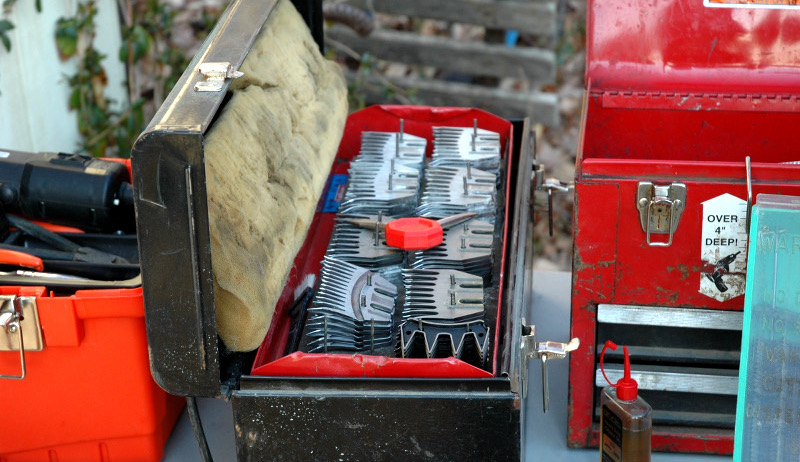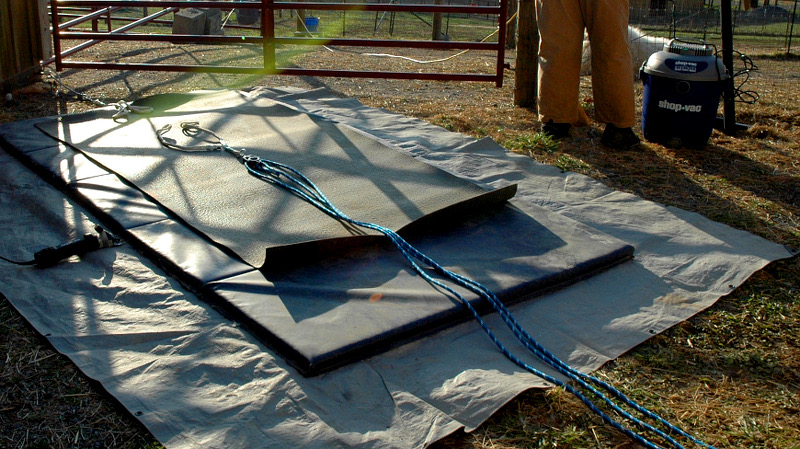
Sheep, alpaca and llama owners: You have fleece. Lots of it. Which is great, until the temperature starts to rise. Depending on your location, heat stress in heavily fleeced animals can be a serious health problem. Haircuts for your herd are the best option, but shearing day in the spring is done best with a little bit of planning. Here are some tips to make sure your shearing is safe, healthy and fun for humans as well as animals.
1. Enlist Lots Of Helpers

A smoothly running shearing day is directly related to the number of helpers you have on hand. Containing animals, catching animals, helping restrain animals—there are a lot of moving parts to keep moving efficiently. Recruit helpers who aren’t afraid of getting their hands dirty. Shearing day is a great way to introduce new folks to your farm, and this is a great way to get kids involved, too.
2. Make It Fun

If you have a lot of animals, shearing day can be lengthy. The shearer and helpers will always appreciate snacks and water, so think of this as a bit of a celebration—shedding that fleece and turning a fresh eye toward the rest of spring and onto summer.
3. Keep Waiting Animals Happy
Humans comfortable? Check. What about the animals? Make sure the ones in the holding pen awaiting their turn have access to fresh, clean water and some hay to munch. If animals are corralled inside, consider airflow. With increased animal density in a limited space, barns can get stuffy. Fans can help with airflow—just make sure that additional wires aren’t underfoot.
4. Keep The Shearing Location Clear

The area where the shearer will work must be clean and free of clutter. The easier it is to move around, the faster and more efficiently the work will be done. When setting up the area, consider your proximity to electrical outlets and lights. Location should also be chosen based on its vicinity to the animal holding pen. If you’re keeping your fleece, have plenty of bags on hand to scoop up what you’ll retain and get it out of the way. Have tags on hand if you need to keep track of which fleece belongs to which animal.
5. Make Sure The Animals Are Clean
Watch the weather. If rain is in the forecast, keep your animals indoors the night before, if possible. Muddy, wet animals make for difficult shearing.
6. Update Your Records
Have a paper and pencil (or smart phone or tablet) available for record keeping during shearing. Are all your animals identifiable? Here’s your chance to catch up on some record keeping in real time.
7. Tend To Health Maintenance Issues
Shearing day is a fantastic opportunity to check or update some herd health matters—you have all your animals caught and in one place, so why not? What better time to also consider measuring body weights, evaluating for deworming, administering vaccines if needed, checking ear tags, trimming hooves, gathering fecal samples, and so on. You also can consider scheduling a vet visit at the same time, if needed.
8. Put Your Hands On Your Herd
Shearing day is a good time to get your hands on all your animals. After shearing, take a look at each one: Check body condition scores and do a quick check for cuts, lumps, bumps or anything else abnormal that you see that previously was hidden under the fleece. Now is your time to check it out.
9. Monitor Stress After The Shearing
Keep a close eye on the flock immediately after shearing. This can be stressful to some animals, especially young or pregnant individuals. Watch the herd for signs of stress and make sure they have access to shade, water and food.
10. Record It All With A Camera
Everyone loves a before and after shot of shearing day. Boost your farm’s social media presence with your herd’s new haircuts.
If all else fails and you begin to wonder, “Why can’t these animals just shed every spring like every other livestock species?” Consider hair sheep.




